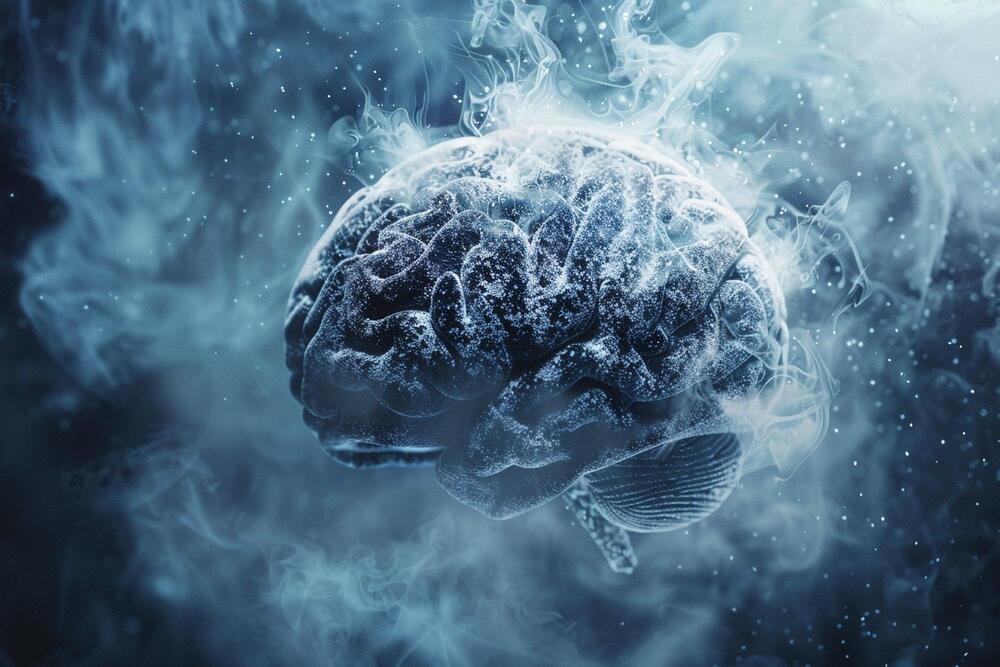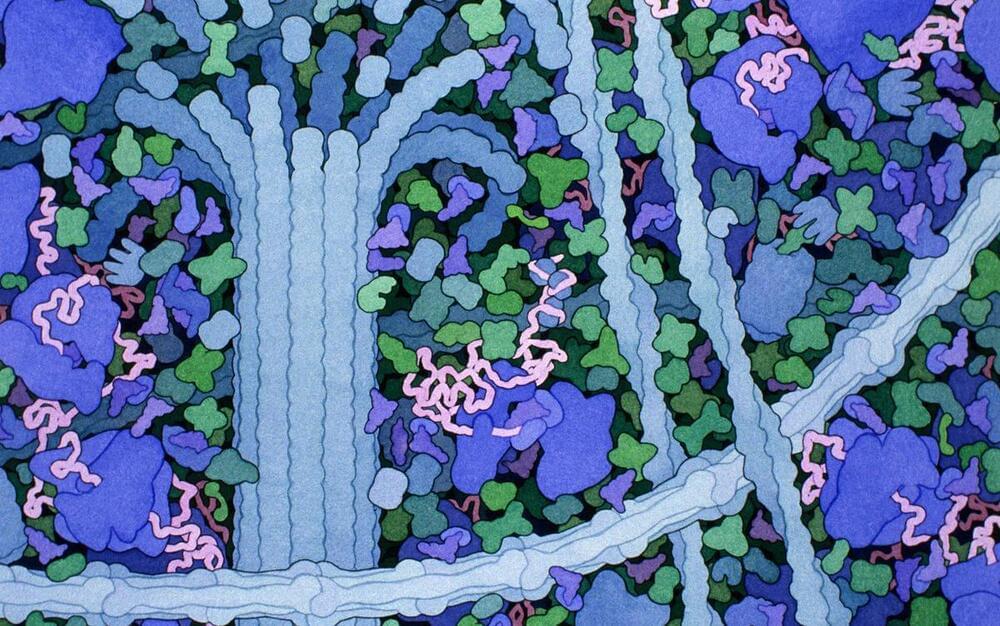Black-capped chickadees have extraordinary memories that can recall the locations of thousands of morsels of food to help them survive the winter. Now scientists at Columbia’s Zuckerman Institute have discovered how the chickadees can remember so many details: they memorize each food location using brain cell activity akin to a barcode. These new findings may shed light on how the brain creates memories for the events that make up our lives.
Category: food – Page 68

Chilling Findings: Scientists Shed Light on How the Brain Perceives Temperature
Christian Lemon, Ph.D., an associate professor in the School of Biological Sciences at the University of Oklahoma, often thinks about temperature sensation and the brain when eating a chilled mint cookie. Now, research from his lab examining oral temperature perception has been published in The Journal of Neuroscience.
In their research, Lemon’s team investigates how cold receptors in the mouth are activated by cooling temperatures, how those signals are transmitted to the brain and how those transmissions are generated into a cooling sensation.


Wendy’s gets Google-parent powered drones to deliver fast-food faster
DoorDash and Wing (an Alphabet company) have announced their first joint drone delivery service in the United States. Targeted at select customers in Christiansburg, Virginia, eligible DoorDash orders from Wendy’s can now be delivered via Wing drone.
Wendy’s orders will be delivered using a Wing drone, which can travel up to 65 mph. Upon reaching its destination, the drone will lower the order to the doorstep using a tether.

Researchers Found Evidence in Ethiopia of a Human Population that Survived the Eruption of the Toba Supervolcano 74,000 Years Ago
Researchers working in the Horn of Africa, also known as the Somali Peninsula have uncovered evidence showing how Middle Stone Age humans survived in the wake of the eruption of Toba, one of the largest supervolcanoes in history, some 74,000 years ago.
Modern humans dispersed from Africa multiple times, but the event that led to global expansion occurred less than 100,000 years ago. Some researchers hypothesize that dispersals were restricted to “green corridors” formed during humid intervals when food was abundant and human populations expanded in lockstep with their environments.
But a new study in Nature led by scientists at The University of Texas at Austin suggests that humans also may have dispersed during arid intervals along “blue highways” created by seasonal rivers. Researchers also found stone tools that represent the oldest evidence of archery.

Harnessing Hemp: Empowering Native American Economies
“There is still significant interest and potential in industrial uses of hemp,” said Dr. Jeffrey Steiner.
How can hemp production help boost local Native American economies? This is what a $10 million grant from the U.S. Department of Agriculture’s (USDA) National Institute of Food and Agriculture hopes to achieve as they recently awarded this grant to the Global Hemp Innovation Center at Oregon State University (OSU) to foster collaboration with 13 Native American Tribes across the western United States, including California, Montana, Nevada, Idaho, Washington, and Oregon with the goal of creating economic stimuli for those communities while improving hemp production.
The grant comes with four primary objectives in achieving collaboration with the 13 Tribal nations, including educational opportunities, technology development, building trade networks, and ensuring product quality. This grant comes as the 2018 Farm Bill helped legalize hemp, leading to hemp production reaching $824 million across the United States in 2021.

This startup wants to fight growing global dengue outbreaks with drones
“The challenge is getting into those hidden places,” says Machado. “It’s rare that Aedes aegypti breeding areas are found out in the open, like on a sidewalk, because when people see them, they destroy them. But with drones, we can get into areas we just can’t otherwise.”
Birdview has carried out studies with several partners since 2021, including the United Nations, the University of São Paulo (USP), and the state-owned Brazilian Agricultural Research Corporation (Embrapa), to better understand the effectiveness of releasing the disease-fighting mosquitoes with drones. First they looked at how the mechanism of the drone and outside conditions, like wind turbulence, affected the survival rate of the mosquitoes and their ability to fly.
The results were positive, so they moved on to flight-and-release tests in the Brazilian states of Pernambuco and Paraná, as well as Florida, where they’ve been working with the Lee County Mosquito Control District to see how far the mosquitoes spread upon release. They used the “mark, release and recapture” method, which involves sterile male mosquitoes being marked with a certain color before being released and later recaptured with traps so the team could see how far they had flown. They also set traps where eggs could be laid and monitored.

A Digital Twin Might Just Save Your Life
In the last decade, thanks to advances in AI, the internet of things, machine learning and sensor technologies, the fantasy of digital twins has taken off. BMW has created a digital twin of a production plant in Bavaria. Boeing is using digital twins to design airplanes. The World Economic Forum hailed digital twins as a key technology in the “fourth industrial revolution.” Tech giants like IBM, Nvidia, Amazon and Microsoft are just a few of the big players now providing digital twin capabilities to automotive, energy and infrastructure firms.
The inefficiencies of the physical world, so the sales pitch goes, can be ironed out in a virtual one and then reflected back onto reality. Test virtual planes in virtual wind tunnels, virtual tires on virtual roads. “Risk is removed” reads a recent Microsoft advertorial in Wired, and “problems can be solved before they happen.”
All of a sudden, Dirk Helbing and Javier Argota Sánchez-Vaquerizo wrote in a 2022 paper, “it has become an attractive idea to create digital twins of everything.” Cars, trains, ships, buildings, airports, farms, power plants, oil fields and entire supply chains are all being cloned into high-fidelity mirror images made of bits and bytes. Attempts are being undertaken to twin beaches, forests, apple orchards, tomato plants, weapons and war zones. As beaches erode, forests grow and bombs explode, so too will their twins, watched closely by technicians for signals to improve outcomes in the real world.

Bird flu is decimating seal colonies. Scientists don’t know how to stop it
PORTLAND, Maine (AP) — Avian influenza is killing tens of thousands of seals and sea lions in different corners of the world, disrupting ecosystems and flummoxing scientists who don’t see a clear way to slow the devastating virus.
The worldwide bird flu outbreak that began in 2020 has led to the deaths of millions of domesticated birds and spread to wildlife all over the globe. This virus isn’t thought to be a major threat to humans, but its spread in farming operations and wild ecosystems has caused widespread economic turmoil and environmental disruptions.
Seals and sea lions, in places as far apart as Maine and Chile, appear to be especially vulnerable to the disease, scientists said. The virus has been detected in seals on the east and west coasts of the U.S., leading to deaths of more than 300 seals in New England and a handful more in Puget Sound in Washington. The situation is even more dire in South America, where more than 20,000 sea lions have died in Chile and Peru and thousands of elephant seals have died in Argentina.